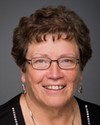Thank you.
Good afternoon, ladies and gentlemen. Thank you for the invitation to offer testimony today towards your study on the abuse of older women and, in particular, your interest in the experience of older aboriginal women.
My name is Claudette Dumont-Smith, as Ms. Ashton just said. I'm Algonquin, from the Kitigan Zibi community, which is just 90 miles north of here on the Quebec side.
Welcome to Algonquin territory.
I'm a registered nurse by profession, but I've been in the management field for quite some time now.
I'd like to begin speaking on this issue by going back to 1993, when I was a member of the Aboriginal Circle on the Canadian Panel on Violence Against Women. Through the work carried out by the panel, extensive research was carried out on the issue of violence against women, including the aboriginal female population. It was documented in the panel's final report in 1993 that there was a serious lack of research on aboriginal elderly women who are victims of violence and abuse.
Moving forward to 2002, I carried out research for the Aboriginal Healing Foundation on the issue of elder abuse in Canada. My research again indicated the lack of data on elder abuse in Canada in general, and even less data specific to the aboriginal population. In 2007, as the health director of the Native Women's Association of Canada, I prepared a proposal to examine elder abuse specific to aboriginal women and once again realized the scarceness of data in this area.
I would suggest that the findings of the research paper of 2002 would still hold true today, because there just isn't any research out there. That paper focused on domestic abuse, which is defined as “any of several forms of abuse or maltreatment of an older person by someone who has a special relationship with the elder”. The three most frequent forms of abuse towards the elderly are the physical, psychological, and financial forms, including neglect.
Although there is a lack of statistical evidence to indicate that the rate of abuse and neglect of aboriginal female seniors is greater than that for the mainstream population, it is highly unlikely or even implausible to think that the rates would be similar or even less in light of their living conditions. Every indicator of violence, or known contributing factors, raises the risk of violence for aboriginal women, and makes the rate greater.
For example, aboriginal people experience higher rates of domestic violence overall. Drugs and alcohol dependency are serious issues. Overcrowding is common with the extended family, that is, the older members living with younger families. The loss of a role in the aboriginal society due to the impacts of the Indian residential school system, along with poorer socio-economic conditions, indicate that they live in very high-risk conditions in regard to violence and neglect.
I would like to inform the members of this standing committee that the Native Women's Association of Canada has been addressing this issue since 2007, but first I would like tell you about the Native Women's Association of Canada. It has served aboriginal women in Canada for 37 years, with the goal of enhancing, promoting, and fostering the social, economic, cultural, and political well-being of aboriginal women of all ages.
As mentioned above, a proposal was submitted to the new horizons for seniors program to examine this issue. Through the funding that was received, NWAC was able to carry out its very successful 22-month project entitled "Grandmother Spirit." I'd like to speak on that project now.
The Grandmother Spirit project was undertaken to raise awareness of senior abuse, safety, and well-being for senior aboriginal women in Canada. The project was based on the belief that grandmothers, senior aboriginal women, hold tremendous life experience and wisdom, and that they should guide work carried out on the issues of senior abuse, as well as identify what needs to be done to help ensure that senior aboriginal women are safe and well in their communities.
This honours the spirit of our grandmothers, of the roles our grandmothers held prior to colonization, and also the need to restore recognition and respect of these roles in our communities and Canadian society today.
The project was guided by an advisory committee composed of elders, community members, service providers, and academics--and it even included youth. The advisory committee served to ensure that this project was carried out in a good way, by helping to develop the approach to research and consulting on issues of ethics, sampling, and how to share the knowledge that was gathered.
The Grandmother Spirit project used an aboriginal approach to research, gathering together grandmothers from across the country in research circles to collect their stories and learn from their life experiences and wisdom. The grandmothers were asked to share what they knew or were taught about the care of seniors/grandmothers, what they felt impacted safety and well-being, including issues of senior abuse, what was happening or already existing in their communities that helped to address issues of safety and well-being, and what they felt was needed, but more importantly, their visions for moving forward.
The grandmothers shared that there was a general lack of respect toward grandmothers and grandfathers, which contributes to the invisibility or acceptability of senior abuse in our communities. Actively revitalizing respect for our seniors and elders and for all our community members is an important action towards preventing the mistreatment and abuse of seniors and elders from becoming normalized.
The grandmothers were able to describe many factors, which also came out in the 2002 study, that they see as contributing to or holding senior abuse in place, including: fear, silence, isolation, poverty, the need for more engagement of seniors and elders by political leadership, and the challenges of addressing issues of abuse in smaller communities. Further, they described a range of abuse they had witnessed or experienced in their own communities, including: neglect; emotional, psychological, sexual, financial, and material abuse; and abuse relating to medication.
The abuse relating to medication was very commonly discussed and included a range of abuses, from the theft of a grandmother's medication for use or sale by a family member, to the abuse of medications to have grandmothers sedated such that family members could more easily access their home, their belongings, or their money.
Institutional abuse is an emerging category that was identified through the Grandmother Spirit project and it should be further explored in future research exploring issues of senior abuse. Here, institutional abuse refers to harm to seniors or violation of their rights resulting from institutional or government policies or practices.
One of the key examples would be the barriers for many aboriginal seniors to age in place--that is, to remain in their own communities--due to lack of services, resources, or facilities. Many reserve-based communities have complained of the difficulties of trying to secure funding to build, maintain, and offer long-term care and/or assisted living centres.
For some seniors, accessing needed care means they are moved several hundred or more kilometres away from their home communities, their family members, and land. The resulting isolation, often paired with care provided in English instead of their own language, and care that is not culturally sensitive, was directly linked by the grandmothers to the experience of being ripped away and placed in residential schools. The category of institutional abuse underlines the need to address systemic issues that can re-enact trauma or compound the social exclusion experienced by aboriginal peoples in Canada.
At the same time, the grandmothers also identified things they saw in their communities that were helping to raise awareness of, to stop, or to prevent senior abuse. For example, one grandmother had started a local radio show to raise awareness and talk about issues of senior abuse. In one on-reserve community, we learned about an innovative program in which local RCMP officers visit and have tea with elders who the community or community health staff have identified as vulnerable or who they think may be experiencing abuse but not reporting it.
Another example of a positive approach to promoting the safety and well-being of grandmothers is embodied in the work of the Aboriginal Senior Resource Centre of Winnipeg. The centre offers a broad range of programs and services that continue to evolve in response to the needs of the seniors served by the centre. It provides assisted living units for aboriginal seniors and opportunities for seniors to socialize, speak their own language, share their knowledge, develop new skills, volunteer, and participate in the local community, all of which can be understood from a holistic approach as contributing toward safety and well-being.
We asked the grandmothers who participated in our project to share what they feel is needed to keep grandmothers safe and well in their communities. This includes emphasizing the importance of cultural values and family and community relations, as well as addressing broader structural issues of chronic underfunding for aboriginal community services. Reflecting on the knowledge of the grandmothers' efforts to address issues of senior abuse, safety, and well-being requires a culturally driven, long-term, holistic view that engages all members of our communities from young to old.
NWAC will continue to pursue funding to develop meaningful resources, programming, and policy analysis to support aboriginal women, their families, and communities in addressing senior abuse, safety, and well-being, based on the recommendations of the grandmothers who participated in our project. This includes a heavy emphasis on fostering cultural connections, including relationships between the youth and the seniors, developing educational and workshop materials for the community, assisting aboriginal women, and advocating for needed change in policies related to inadequate funding support for on-reserve or aboriginal-specific long-term care, home and respite care, and home improvement programs to help grandmothers modify their homes so they can age in place in their homes.
It should be noted that NWAC has held a seat on the advisory committee for the National Initiative for the Care of the Elderly, NICE, a project that is developing a national definition and measurements of the abuse of older adults. NWAC continues to advocate for attention to issues of cultural relevance and sensitivity in how these definitions and measurements may be used.
We look forward to continuing to work with all stakeholders in the field of senior abuse to ensure that the unique needs, concerns, and circumstances of senior aboriginal women are addressed.
Thank you.









